5 easy ways to turn a plain living room into a luxe cinema room
Create a dreamy cinema room with these affordable updates and interior designer top tips

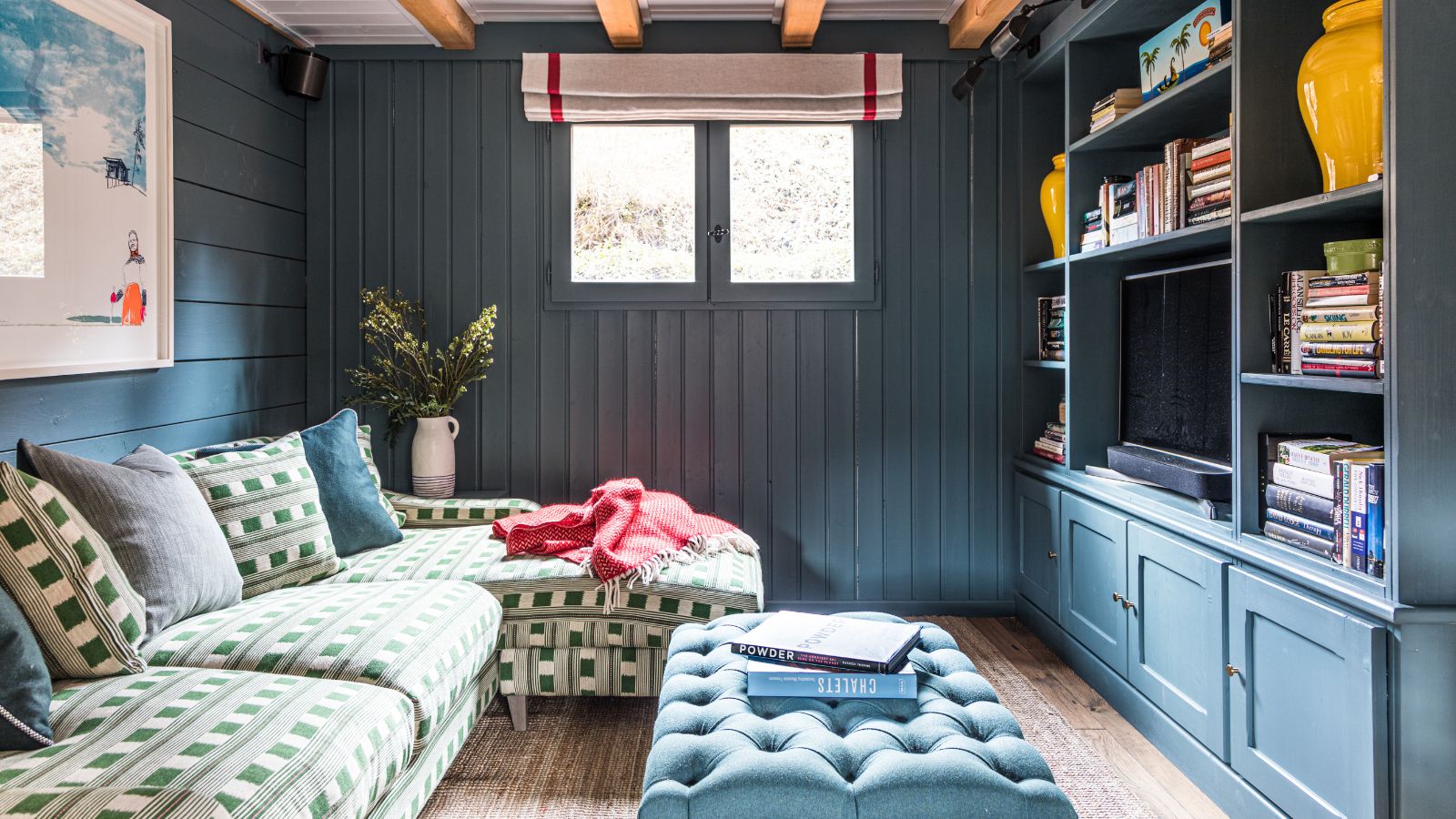
Often considered a luxury, it is now possible to create a cinema room in practically any space in your home. All it requires is the coming together of a few key elements: flexible furniture; the ability to turn the room pitch black; effective soundproofing and a projector.
Transforming your living room ideas into a versatile cinema room is a great way to draw the family together and encourage you to all kick back and enjoy the latest blockbusters from the comfort of your home. Not got space in your living room – why not make an outdoor cinema instead?
How to turn your plain lounge into a luxe cinema room
'A home cinema room works well in north-facing spaces or below-ground areas where you can use the lack of natural light to your advantage and create a cosy space for everyone to come together and enjoy a great film,' says Bunny & Emma of Turner Pocock.
'Designing bespoke joinery is always a good idea to not only provide easy storage ideas but also ensure that the TV screen is not the key focus of the room – ideal if your home cinema room is a multifunctional space.'
1. Choose a modular sofa to provide flexibilty
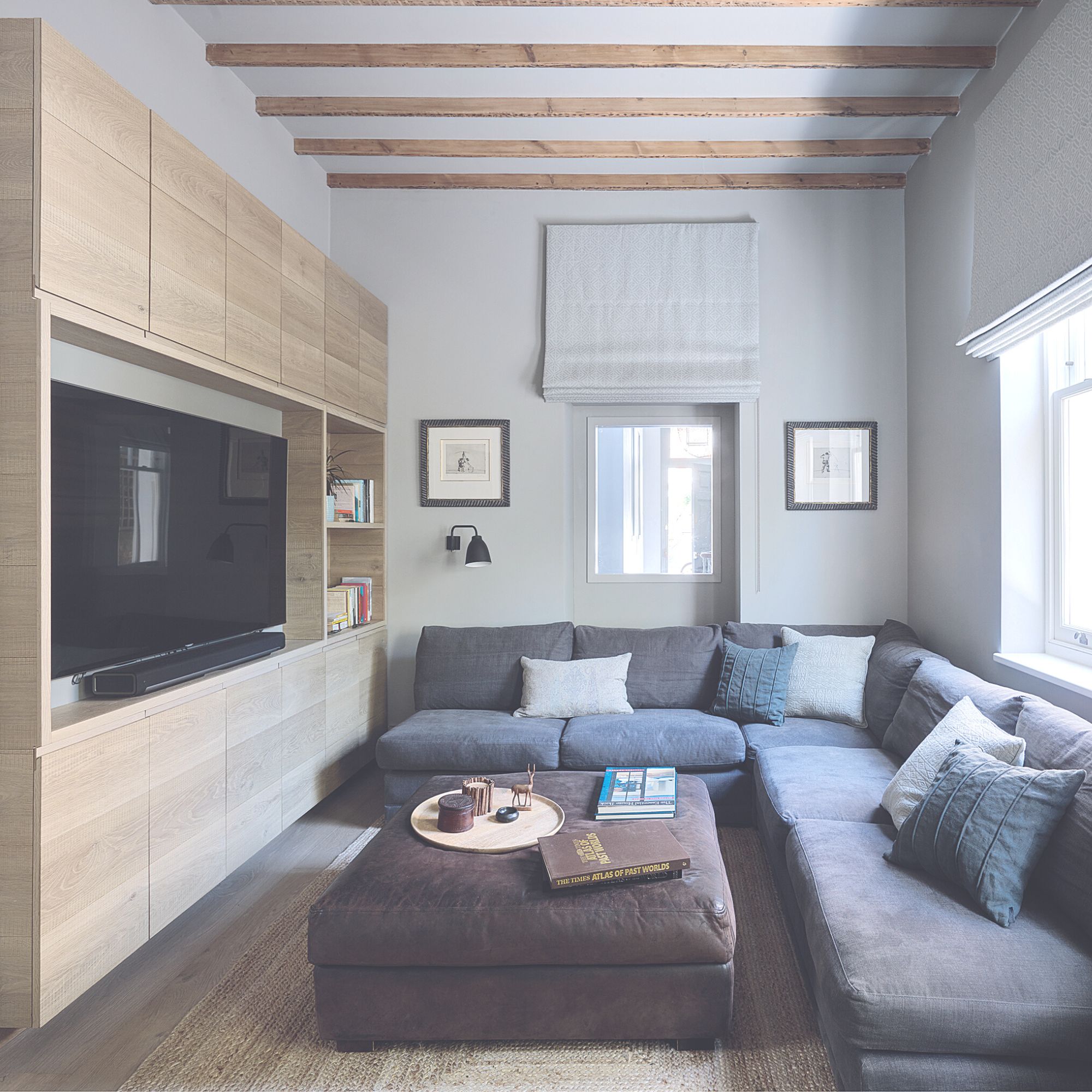
Seating should be comfortable but flexible. When designing a cinema room, draw on living room trends and opt for furniture that is elegant but versatile. Modular seating provides total freedom, allowing you to create whichever configuration works best for your situation.
‘With modular sofas, each component is separate, which means you’re able to add or remove pieces whenever you like, and to fit any size or shaped room. For example, if you want to create a traditional-looking cinema space, then you can utilise the single sections, spacing them apart from one another. If however, you would prefer a cosier setting you can create 2-3 seater layouts so you can cosy up with your loved ones when watching your favourite movies,’ says Kelly Collins, interior designer and head of creative at Swyft Home.
If you're looking for a new sofa for your cinema room, then keep your eye out for sofa deals which will help you to purchase a high-end sofa at a lower price point.
Sign up to our newsletter for style inspiration, real homes, project and garden advice and shopping know-how
2. Opt for window treatments that let you black out the room
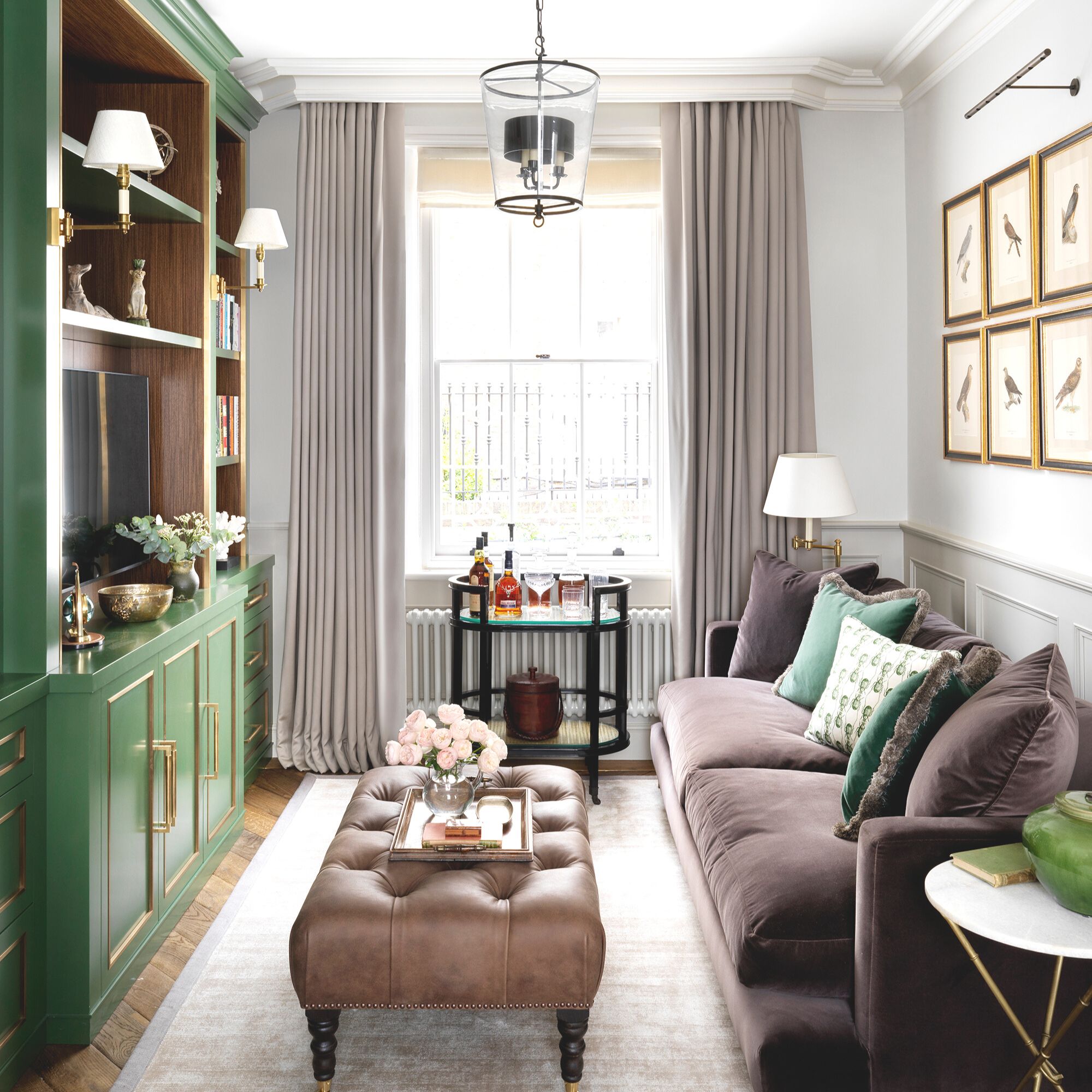
Often the most off-putting element of converting a basement into a room is the lack of natural light, however, this plays into your hand when it comes to constructing a cinema room as total darkness will help you create an immersive experience. Discovering how to convert a basement offers a great opportunity to design the perfect cinema room.
In a room with windows, pairing black-out window treatments – such as blinds – with heavy curtains can achieve a similar effect. ‘The combination of a light linen blind and heavy linen curtains framing the window allows this space to function well as both a library during the day and a cosy entertainment room in the evening. The linen blind creates privacy while letting plenty of light into the room and the heavy curtains offer the option to block out this light when required,’ says Louise Wicksteed, creative director at Sims Hilditch.
Artificial lighting, of course, is essential – opt for a range of wall lights and lamps that will give you complete control over the look and feel of your space. For a truly immersive experience, LED strips, such as those from Govee – available on Amazon– can be applied behind the television and will change colour depending on the hues shown on the screen for that authentic cinema feel.
3. Trade your TV for a projector
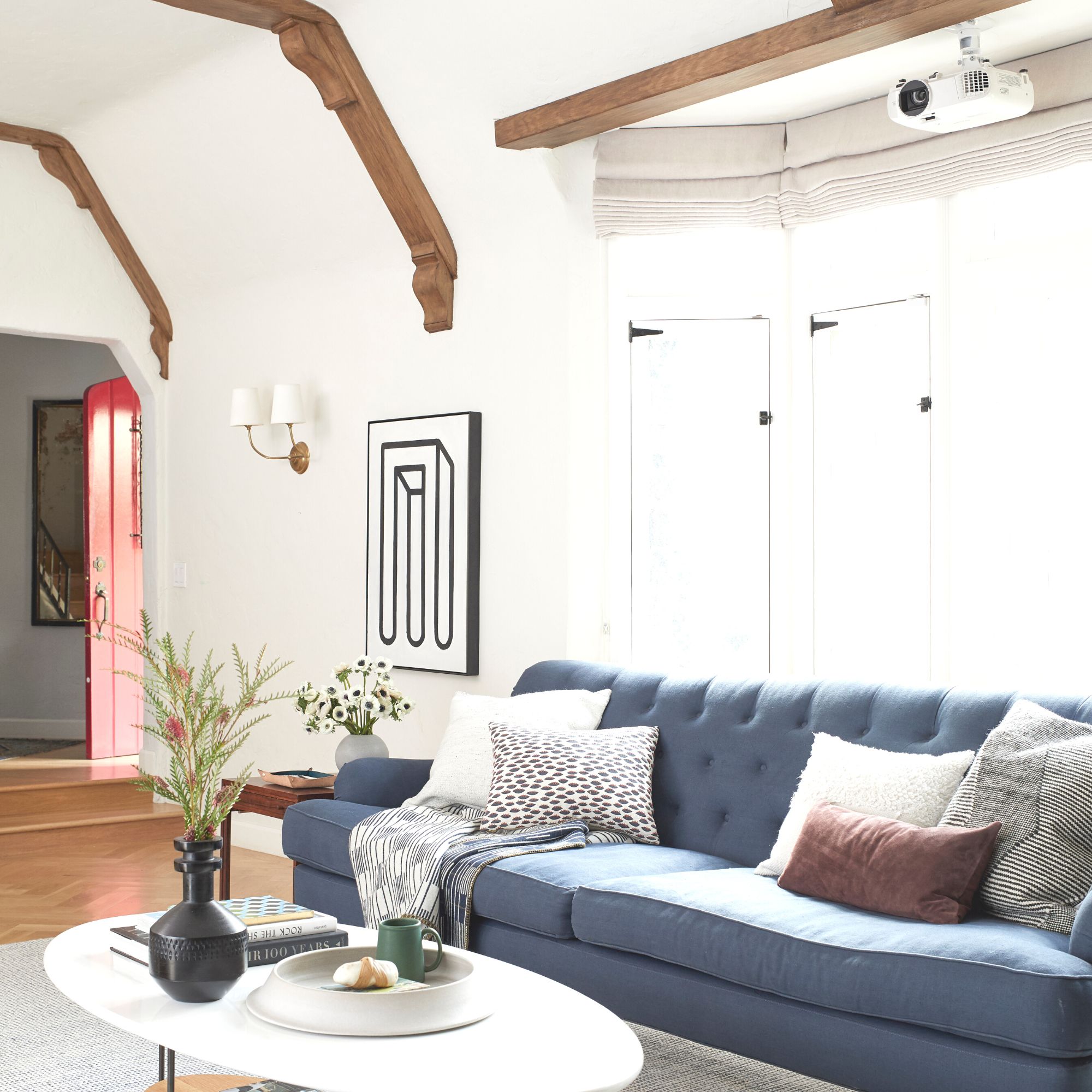
There has been an explosion in home projectors in recent years and is a great way to create that big-screen feel.
‘We’re seeing a big shift in popularity for homeowners choosing projectors over traditional large TVs. Nowadays, ultra-short-throw projectors are much cheaper than an LCD TV of the same size. They also don’t clutter the room like a traditional TV thanks to a smaller, sleeker design,’ says Tex Yang, VP of XGIMI Technology. ‘Projectors also offer a safer viewing experience than typical TVs, as they don’t put the same strain on your eyes.’
Here, designer Emily Henderson has opted for a ceiling-mounted projector, but there are lots of wireless, freestanding designs that can simply be tidied away when not in use, perfect for a multi-function cinema room.
Projectors don't need to cost a fortune either, you can pick up a mini projector on Amazon for around £60.
4. Create an immersive experience with surround sound
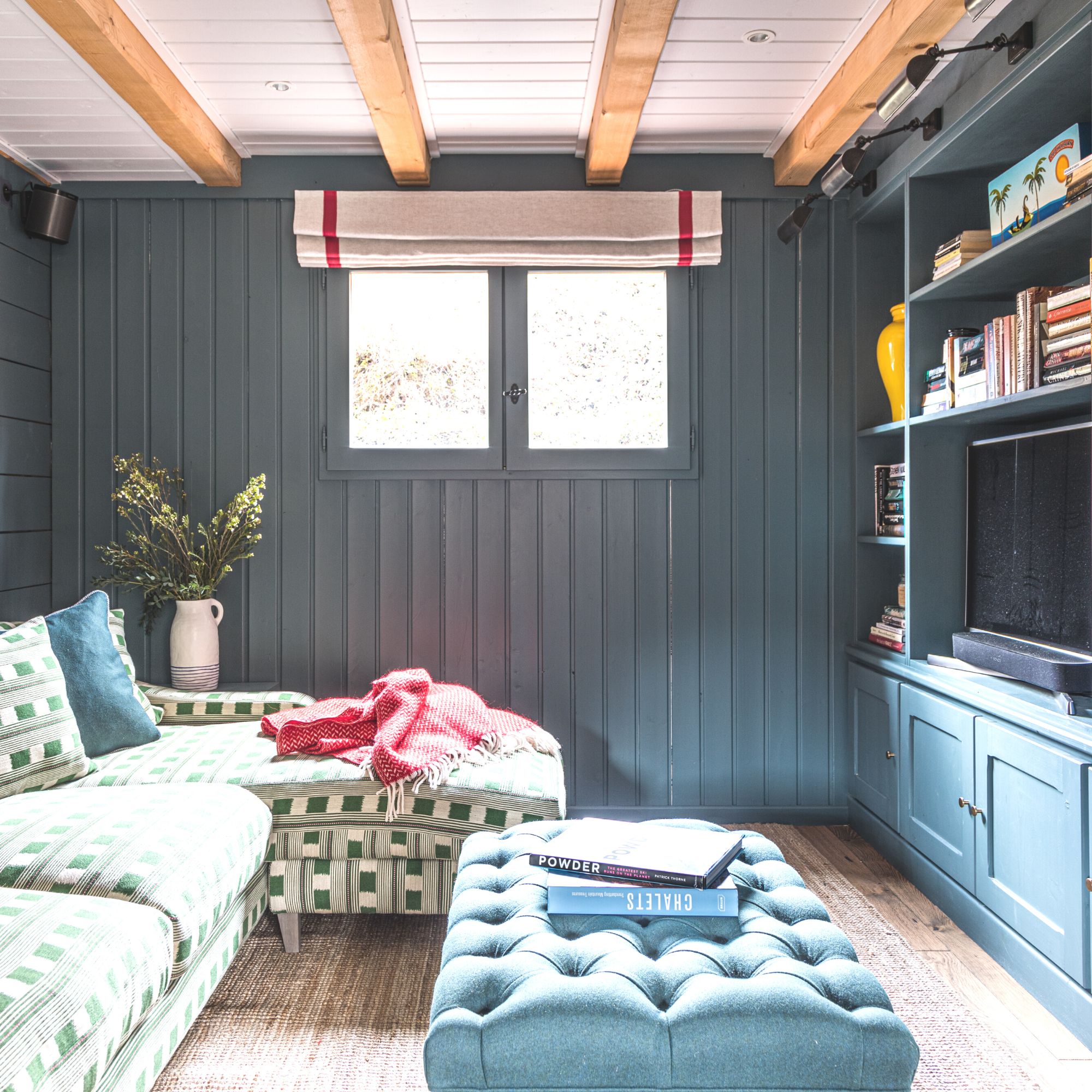
Sound is a vital part of the immersive cinema experience. To achieve an authentic cinema room, the sound should come from multiple vantage points. For example, here, a large soundbar under the television is paired with a wall speaker behind the sofa.
Of course, intricate speaker systems are futile if you can still hear conversations in the next room or the sounds of traffic on the road outside. One of the most efficient and aesthetic methods of soundproofing is wall panelling ideas – due to timber’s sound-absorbing qualities, panelling is a great way to reduce external noise. You can also pair this with sound-absorbing panels and lots of soft furnishings to increase efficiency.
5. See the potential for a cinema room in existing spaces
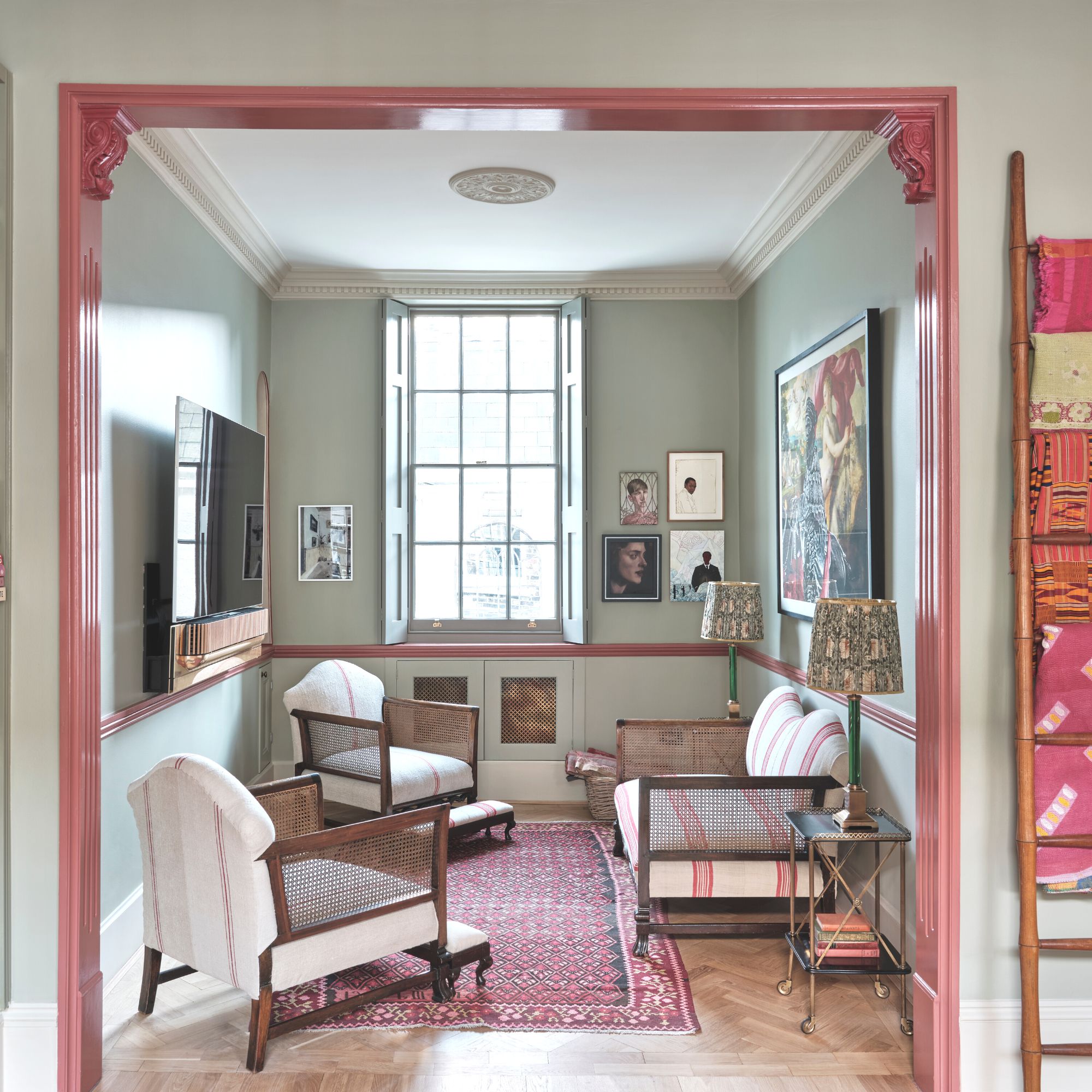
When adding an auxiliary room, like a cinema room – you have to make use of the space you have available, this could be converting a basement or loft, or you can convert your existing family living room – or at least part of it – into the perfect cinema space.
This cinema room was added to an existing living room and provides the perfect space to relax and entertain. ‘When designing this cinema room, we highlighted original architectural features such as the architrave and dado in a bright red ochre shade and dressed walls with art and antiques. We also chose antique lacquered French side tables to bring a historic edge to this more modern room,’ says Adam Knight, director of Nefarious Interior Design.
FAQs
How do I turn my room into a cinema?
Turning your room into a cinema is surprisingly easy. A large screen – or projector – is a great starting point. Black out the room with blackout curtains or blinds to ensure that you make the most of the visual effects. Then use small speakers to create a surround sound experience – this is something you could use your existing smart speakers – such as Amazon's Alexa devices – to achieve.
Why do you need a home cinema?
You need a home cinema because it transforms the mundane exercise of watching a film on a Friday night into something magical.
If you've ever taken your family to the cinema, you know it can be a costly exercise. Creating your own home cinema will, in the long term, prove more affordable. Designing your own home cinema room doesn't have to be a costly change – comfy seating, a projector, a few speakers and a blackout blind can quickly transform your existing living room into a fully functional home cinema.
While a home cinema room probably won't add monetary value to your house – mostly because you're likely to bring the projector, sofas and speakers with you when you move – it can prove valuable as a vehicle to spend time together as a couple or a family when you otherwise might be more drawn to watching content on individual devices.

Holly is one of Ideal Home’s content editors. Starting her career in 2018 as a feature writer and sub-editor for Period Living magazine, she has continued this role also adding regular features for Country Homes & Interiors and the Ideal Home website to her roster. Holly has a passion for traditional and country-inspired interiors – especially kitchen design – and is happiest when exploring the countryside and hills of the Lake District. A keen gardener, she is a strong believer that you can never have too many houseplants.